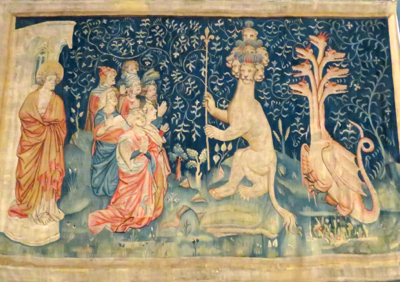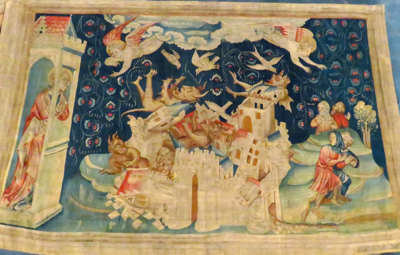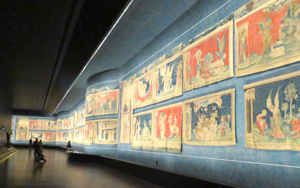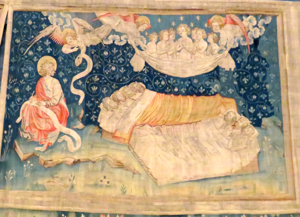 |
Tapestry of the Apocalypse, Angers, France | |
| Don't miss this magnificent work of art from the 14th century! | ||
|
|
|
Known in French as the Tenture de l'Apocalypse or the Tapisserie de l'Apocalypse, the Apocalypse Tapestry is a true gem of the Middle Ages. The tapestry was commissioned in 1375 by Louis I, Duke of Anjou, and was completed by 1382, amazingly fast for its size and complexity. It is the most famous tapestry of the 14th century, a time when the tapestry industry was developing large workshops. Tapestry was considered the best way to tell important stories and was also an indication of the wealth and glory of royal patrons. This golden age of tapestry began in the mid 14th century and lasted until the 17th century. The original Apocalypse Tapestry was about 140 meters (459 feet) long and 6 meters (20 feet) high. It consisted of 90 panels, each telling a piece of the Apocalypse story, as told in the Book of Revelation of St. John the Divine. The individual panels, with their backgrounds of red or blue, are filled with both realistic and fanciful characters, plants, and settings.
The Tapestry was displayed for some years at or near the Château, and then in 1480 King René gave it to the nearby Saint-Maurice cathedral. Unfortunately, during the French Revolution, it was taken and cut apart, with pieces being used for everything from door mats to horse blankets to protecting orange trees. Miraculously, the fragments were found in 1848 and preservation work began. The tapestry was returned to the cathedral in 1870. After World War II, it was given back to the Château d'Angers, and displayed in a purpose-built gallery in the Château. This gallery has installed ventilation and lighting systems aimed at preserving this amazing work, while also allowing visitors to see and appreciate it. The Tapestry that we see today is about 100 meters (328 feet) long and is beautifully displayed. Although some panels were lost forever, 71 of the original 90 scenes remain, and they are remarkable. The Book of Revelation, the last book in the Christian bible, tells the story of the Apocalypse. It was a well-known story in the 14th century, and it addresses the conflicts between good and evil. The four horsement of the Apocalpyse are portrayed, each with his symbol of conquest, war, famine, or death.
The tapestry itself features many battles and confrontations of angels and beasts. While much destruction and death is portrayed, it ends with the triumph of good over evil, providing some hope for the world. Tapestry of the Apocalypse
|
|
Above, A portion of the display of the amazing Tapestry of the Apocalypse.
|




